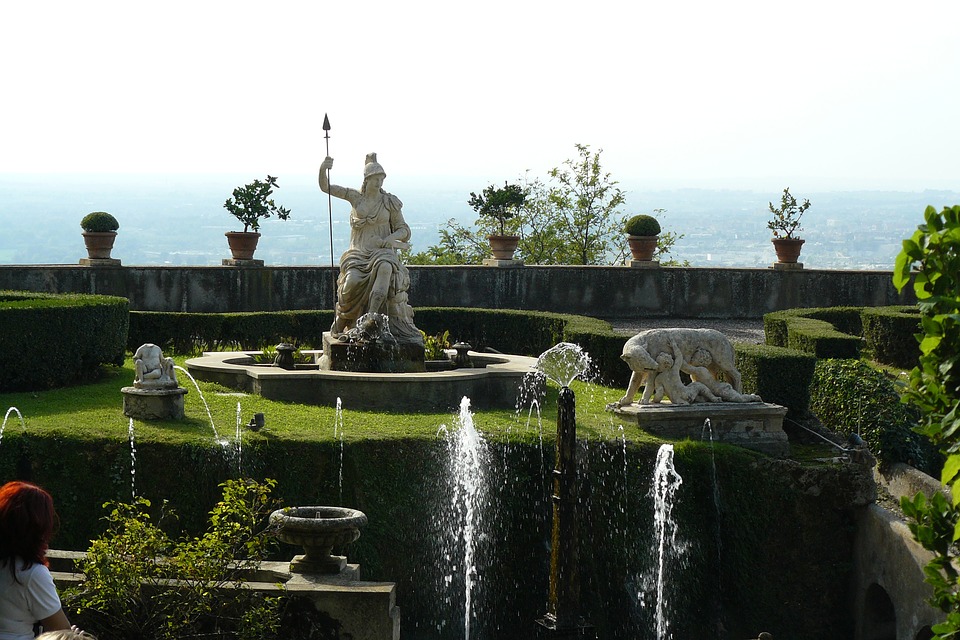Tivoli contains so many treasures, that it is certainly a destination to keep an eye on for a holiday. Think for example of sulphurous waters With therapeutic properties, known since the times of imperial rome. Wounded Roman soldiers went to get treatment at the springs.

The Emperor Augustus also benefited, and commissioned the Imperial Baths. From ancient Rome to the Renaissance, the properties of the sulphurous waters of Tivoli survived; and with the arrival in Tivoli of Cardinal Ippolito d'Este, the Bagni Vecchi were built inside the majestic Villa d'Este.
Tivoli, from the Roman baths to Villa D'Este
Skin, urinary, and respiratory diseases were treated there. In modern times, the Baths of Tivoli were born, which still today are a reference point for lovers of spas throughout Europe. Enchanting and unique then "Villa D'Este”, Commissioned by Cardinal Ippolito himself; built on a site of a Roman villa. Cardinal D'Este, a lover of Roman antiquities, interested in the artifacts that abounded in the area, entrusted the work to the architect Pirro Ligorio.

Many artists and artisans worked there. The waters of the Aniene were conveyed with water coming from the waterfalls, to build the monumental fountains, sets of films and shows. Travertine from the tomb of Cecilia Metella was also used, but years later, the villa and its facilities, passed to the Habsburgs, perished, and the antiquarian collections dispersed. In the mid-nineteenth century, the villa experienced a new season, frequented by artists such as Franz Liszt who was inspired by the villa for some of its lyrics.
Gregorian Villa
The villa passed to the Italian State which started important restoration works, completely restoring it and opening it to the public. Another series of restorations in the second post-war period to repair the damage caused by some fallen bombs was successful. To visit in Tivoli also Villa Gregoriana, renamed by the FAI after the restoration, a natural area of great historical and landscape value. Towering, in the steep valley between the right bank of the Aniene and the ancient Roman acropolis.

The site is known for the large waterfall; a very special example of a romantic garden. Since the archaic age the area was important for the shepherds of the Aniene Valley and the Tiber plain for the transhumance, which descended from Abruzzo along the sheep tracks. It was here that ancient Tibur was born upstream of the great waterfall. This position was important, although geologically and hydrologically very difficult; the territory shows signs of anthropization at least from the second century BC
Villa Adriana
Villa Gregoriana took its name from the pope who had wanted it. The very particular environment of the Villa was born from the need to defend the city of Tivoli from the ruinous floods of the Aniene. The construction of the Gregorian Bridge was also added. Villa Gregoriana is therefore located in a very steep valley, formerly known as "Valley of Hell". The visit itinerary covers first the Inferno Valley, the grotto of Neptune, the Mermaids, various examples of karst landscape, and two Roman temples.

The landscape recurs in the classic iconography of Tivoli since the 18th century, and it was one of the goals of the Grand Tourr. Unique in the world is “Villa Adriana”, an imperial residence from the second century, built by the emperor Hadrian. Built near ancient Tibur, the structure is a complex extended over an area of about 120 hectares. In 1999 it was declared a World Heritage Site by UNESCO. The emperor wanted to reproduce the places and monuments that had struck him most when traveling in the provinces of the empire.
From the Emperor to an archaeological heritage
This imposing building remains a remarkable historical heritage; a real city, divided into four cores. After the death of Hadrian the villa continued to be used, but then abandoned, and during the Middle Ages reduced to agricultural land, and building quarry. Later the interest of humanists, popes, and nobles for the villa grew.

From the XVI to the XIX century the excavations multiplied, finding about 300 works. In 1870 the State purchased the complex from the Braschi family, which was the largest owner of the land. Excavations were undertaken which brought to light the amazing architecture. Villa Adriana was declared a World Heritage Site in 1999.




